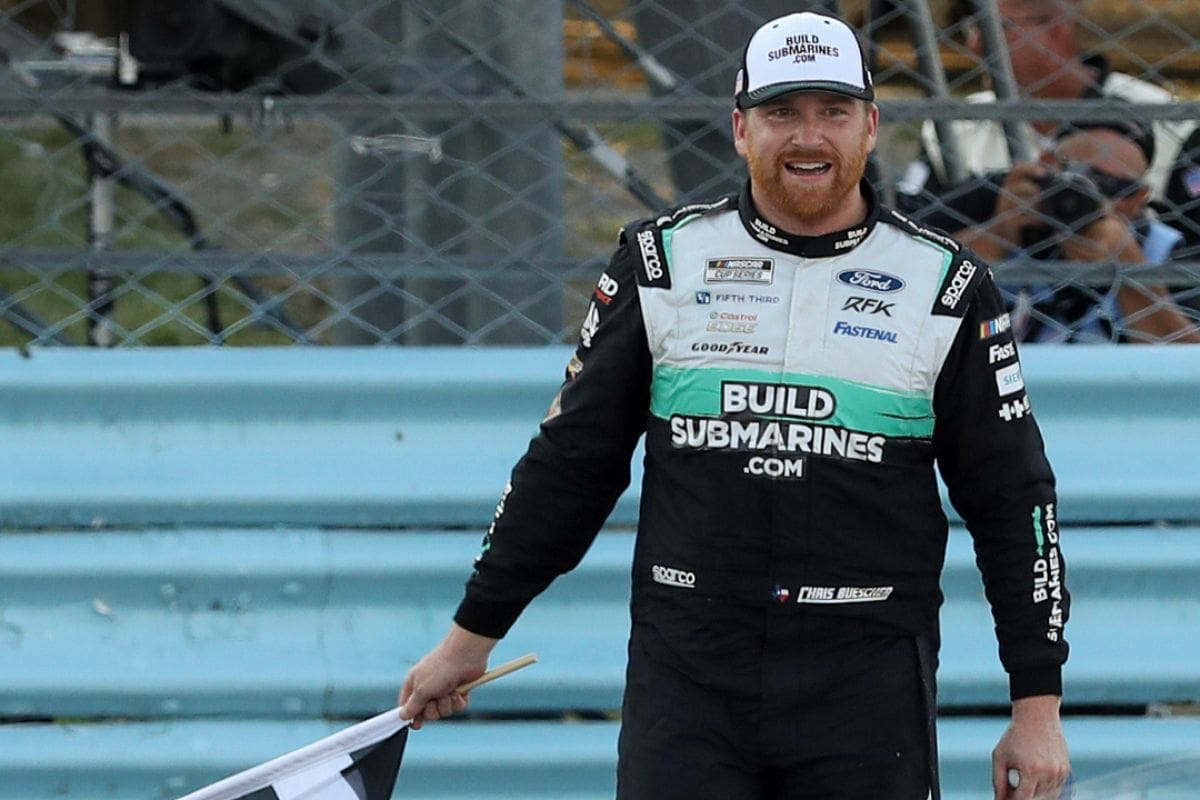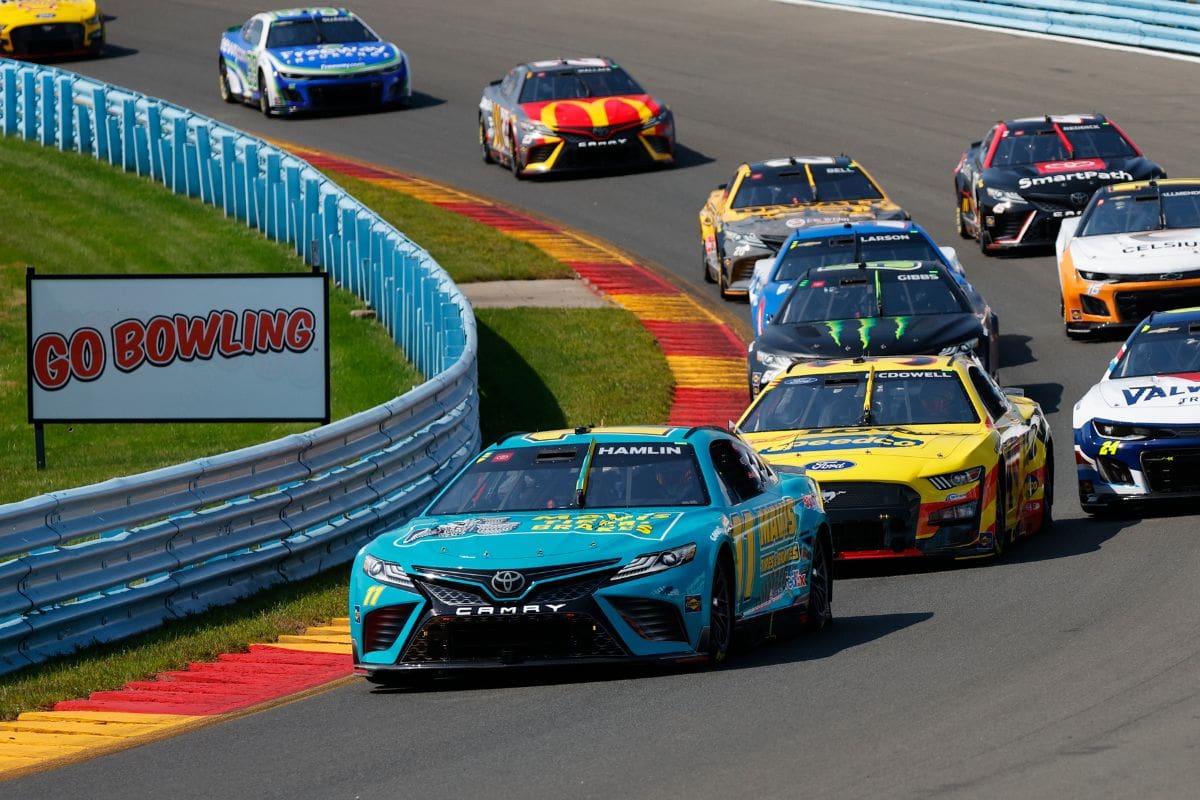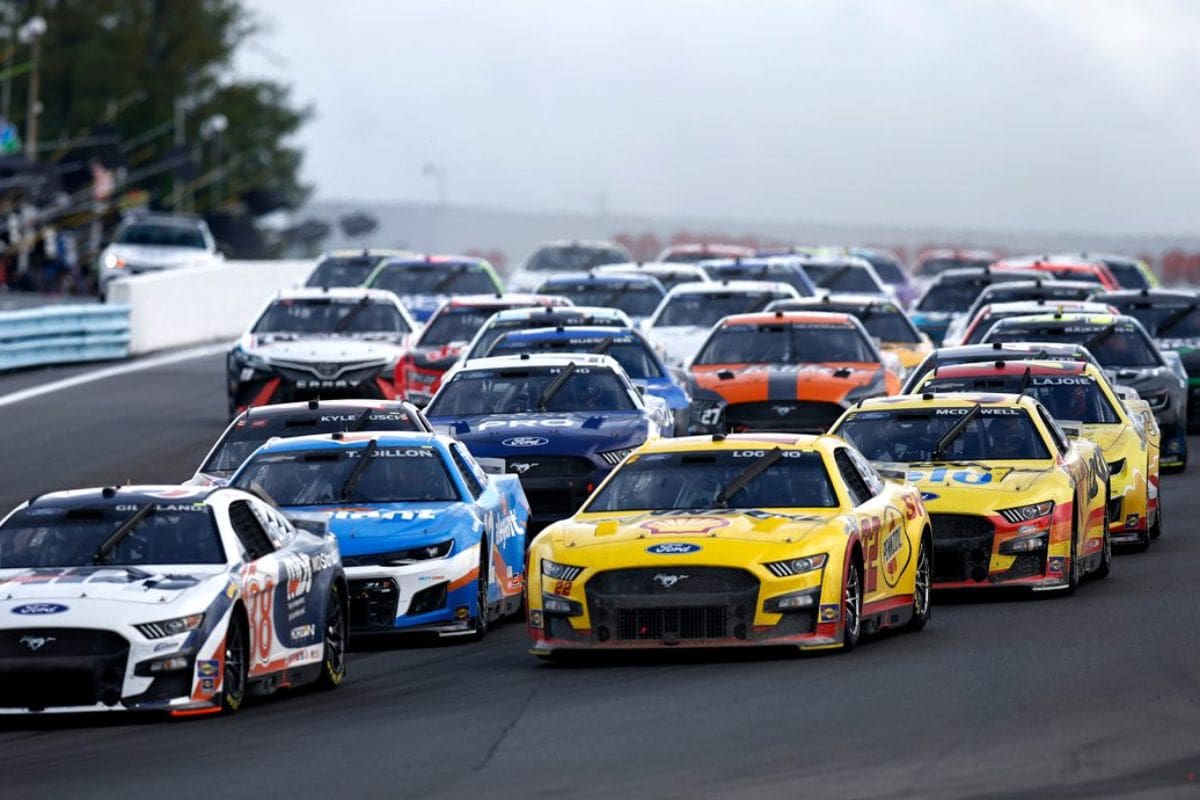Watkins Glen’s Record-Breaking Stat: The recent race at Watkins Glen International has introduced a notable shift in the competitive landscape of NASCAR, as it marked the initial occasion since 2004 where no playoff drivers secured a position in the top five. This anomaly not only highlights the emergence of non-playoff contenders, exemplified by Chris Buescher‘s victory, but also raises critical questions regarding the performance and strategies of established playoff drivers. As the playoffs approach, the implications of this race may reverberate through the upcoming events, challenging conventional expectations and reshaping the narrative of the season. What does this mean for the playoff dynamics ahead?
Key Highlights
- Chris Buescher’s victory at Watkins Glen ended a year-long winless streak and disrupted playoff dynamics.
- For the first time since 2004, no playoff drivers finished in the top five at Watkins Glen.
- Chase Briscoe and Austin Cindric were the only playoff drivers to secure top ten finishes, highlighting competitive challenges.
- Multiple playoff contenders faced setbacks, including Denny Hamlin, who finished 23rd after a chaotic race.
- This unprecedented outcome raises questions about competitive balance and the effectiveness of NASCAR’s regulations moving forward.
Chris Buescher’s Victory and Playoff Picture
Chris Buescher’s victorious return to victory lane at Watkins Glen International marks a remarkable moment not only for his career but also for the broader dynamics of the NASCAR Cup Series playoffs. This victory, achieved against a backdrop of fierce competition, emphasizes the unpredictable nature of the sport, particularly when non-playoff drivers seize the opportunity to assert their dominance.
Buescher’s success not only snapped a year-long winless streak but also placed him squarely in the spotlight as a formidable contender, challenging the established playoff hierarchy.
The implications for the playoff picture are noteworthy. With the top playoff drivers faltering and finishing outside the top ten, the narrative shifts dramatically. The performance of non-playoff drivers like Buescher demonstrates that those with nothing to lose are often the most dangerous.
This race serves as a glaring reminder of the volatility inherent in NASCAR, where fortunes can shift on a single event. The absence of playoff drivers in the top positions reveals vulnerabilities within the playoff contenders, who must now recalibrate their strategies for the upcoming races.
As the playoff landscape becomes increasingly precarious, Buescher’s victory introduces an element of uncertainty and excitement, compelling playoff drivers to reassess their approaches.
Race Chaos and Playoff Driver Struggles
Following the thrilling unpredictability of Chris Buescher’s victory, the subsequent playoff race at Watkins Glen International displayed a chaotic landscape that further complicated the playoff picture. The 2.4-mile road course, notorious for its tricky turns, became a treacherous arena where even the most seasoned drivers faltered, leading to a cascade of unexpected consequences for the playoff contenders.
The race was blemished by an alarming frequency of cautions and spins, ensnaring notable figures such as Denny Hamlin, Kyle Larson, and Christopher Bell in its web of misfortune. The opening lap set a grim tone with reigning NASCAR Cup Series champion Ryan Blaney‘s car being towed away after a devastating wreck.
Hamlin, who has been a formidable presence throughout the season, saw his hopes dashed as his battered No. 11 Toyota limped to a dismal 23rd place finish following multiple incidents.
These unfortunate events not only highlighted the volatility of the race but also exposed the vulnerabilities of drivers who had been considered playoff frontrunners. Bell’s criticism of Goodyear’s tire performance and Ty Gibbs’ remarks on horsepower deficiencies emphasize the multifaceted challenges these competitors faced on a circuit where precision is paramount.
Stat Reveal and Playoff Driver Performance
As the dust settled on the tumultuous race at Watkins Glen, an astonishing statistic emerged, reshaping the narrative surrounding playoff driver performance. For the initial time since the inception of the Chase playoff format in 2004, no playoff drivers finished within the top five. This unprecedented outcome has sparked considerable analysis among enthusiasts and experts similarly, as the implications extend beyond the race itself.
Notably, Chase Briscoe and Austin Cindric were the only playoff drivers to finish in the top ten, with Briscoe’s sixth-place finish marking a historic low for playoff competitors. This statistic not only highlights the struggles faced by playoff contenders but also raises questions about their general performance as the season progresses.
This is a wild stat. If I'm reading this correctly, first ever playoff race with no playoff drivers in the top five? https://t.co/uhMUiDZr3i
— Jeff Gluck (@jeff_gluck) September 15, 2024
The implications of this statistic are profound, as it suggests a potential shift in competitive dynamics within NASCAR. The absence of playoff drivers in the top echelon of finishing positions signifies that traditional powerhouses may be faltering, giving rise to unexpected challengers. As the playoffs approach, the performances observed at Watkins Glen will certainly fuel discussions on strategy, adaptability, and the future of the playoff format itself.
Issues and Controversies
While the drama of Watkins Glen unfolded, it became clear that a myriad of issues plagued the playoff contenders, culminating in a race that defied expectations and left several championship aspirations hanging by a thread. At least 11 drivers encountered considerable setbacks, highlighting a chaotic environment that disrupted the strategies of those vying for a championship.
Denny Hamlin’s race exemplified the turmoil. His misfortunes began on lap one with a collision involving Ryan Blaney, followed by brushes with Kyle Busch and ultimately being spun out by Brad Keselowski. This cascade of errors not only hampered his playoff standing but also sparked controversy as Hamlin publicly criticized NASCAR for perceived inconsistencies that he argued undermined his performance.
Moreover, the implications of this race extend beyond individual grievances. As Kyle Larson, William Byron, Chase Briscoe, and Ty Gibbs managed to remain above the cutline, the shake-up in the playoff standings has intensified the scrutiny on race regulations and officiating protocols.
The absence of playoff drivers in the top five is unprecedented, raising questions about the competitive balance and the effectiveness of the current playoff format.
NASCAR’s Role and Future Outlook
NASCAR’s evolving role in shaping the competitive landscape of stock car racing has never been more critical, especially in the wake of the tumultuous events at Watkins Glen. The recent race sharply highlighted the intersection of track design, driver strategy, and NASCAR’s regulatory influence, culminating in a situation where no playoff drivers finished in the top five—a debut in the series’ history.
This anomaly raises fundamental questions about the balance between competition and control within the sport.
Watkins Glen’s modifications, such as the adjusted bus stop and the newly introduced bumps, were intended to improve the challenge for drivers. However, these changes, coupled with NASCAR’s stringent enforcement of repair protocols, have sparked debate over their impact on playoff dynamics.
Ryan Blaney’s frustrations serve as a microcosm of the larger narrative: how much autonomy should drivers have versus the governing body’s responsibility to maintain order and fairness?
“They didn’t give us a chance to fix it. How are they going to dictate if we are done or not? They have no idea of the damage. They said we were done because I couldn’t drive it back to the pit box, but if you have four flats, you get towed back to the pit box. You can’t drive that back. I don’t know what is going on or why they won’t give us a shot to work on it but I don’t agree with.” – Blaney
Looking forward, NASCAR must navigate these complexities carefully. The series is at a crossroads, where the need for innovation must coexist with the tradition of racing.
The upcoming race at Bristol will provide an opportunity for redemption for drivers like Denny Hamlin, but it will also test NASCAR’s adaptability. As the sport evolves, fostering an environment that encourages competitive balance while respecting the skill and strategy of the drivers will be paramount.
News in Brief: Watkins Glen’s Record-Breaking Stat
The unprecedented outcome at Watkins Glen International, where no playoff drivers secured a top-five finish, signifies a crucial shift within NASCAR’s competitive landscape. This event not only highlights the rising skill of non-playoff competitors like Chris Buescher but also illuminates vulnerabilities among established playoff contenders. As the series progresses towards the postseason, tactical adaptations will be vital for playoff drivers to navigate this increasingly unpredictable environment, potentially reshaping the dynamics of future races.



